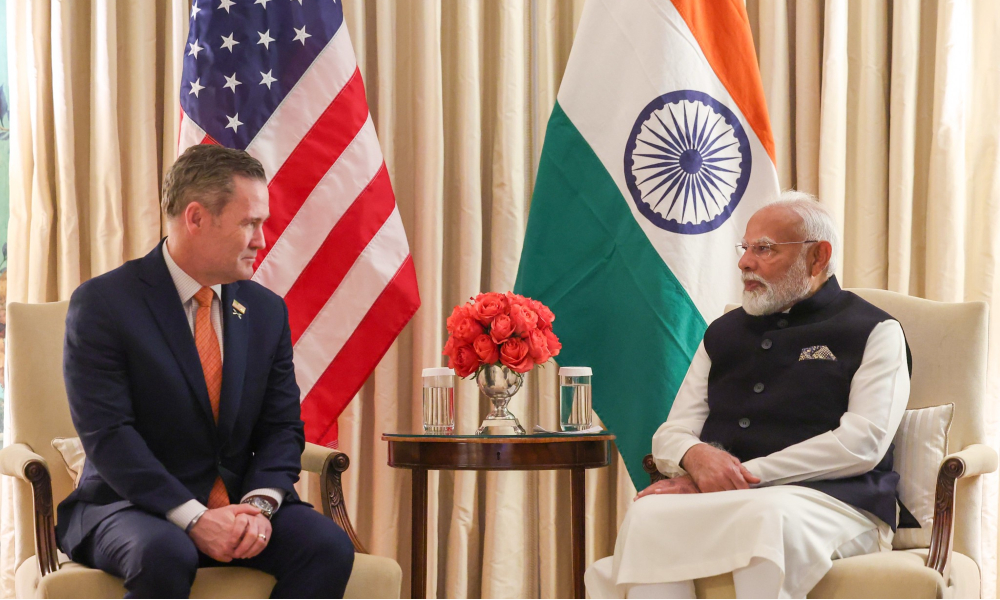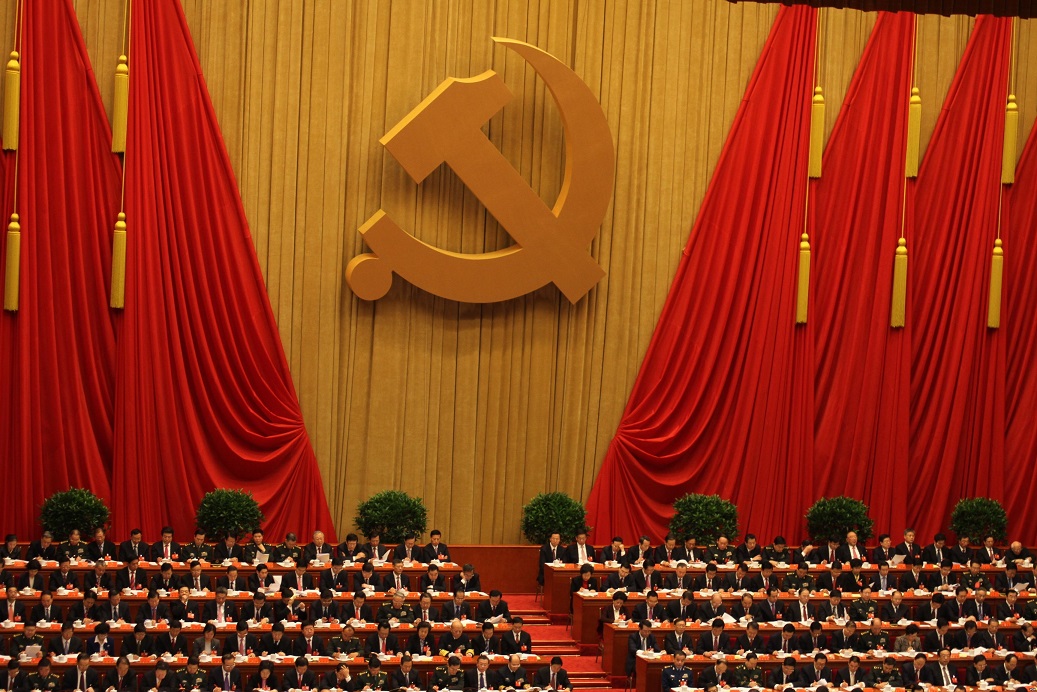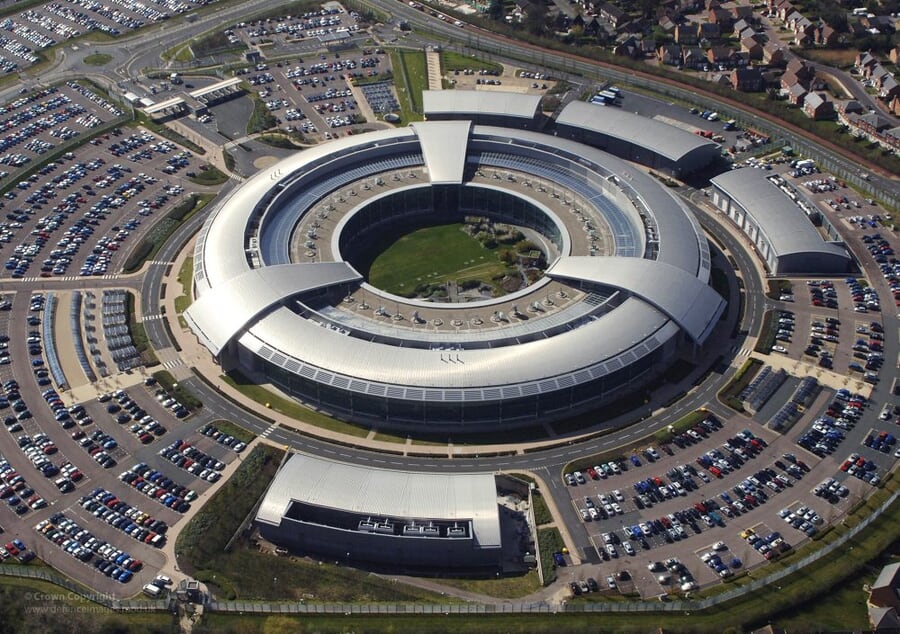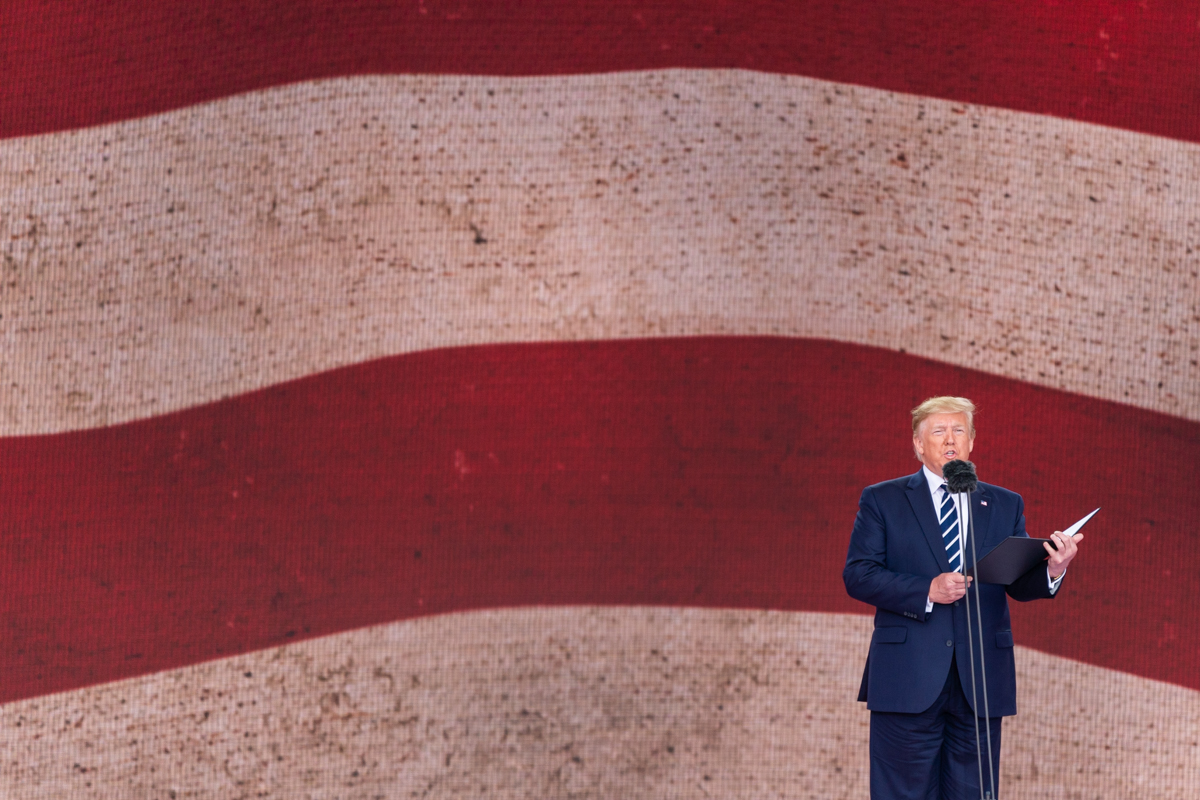Kashmir’s Crisis and India’s Democratic Dilemma

Published by The Lawfare Institute
in Cooperation With

Editor’s Note: The latest back-and-forth between India and Pakistan over Kashmir rang alarm bells around the world due to fears of escalation between two nuclear-armed powers. For India, however, the problem is far greater than the threat posed by Pakistan-backed terrorists. My Georgetown University colleague Shareen Joshi describes how the poor information environment in India, the failure to bring stability to Kashmir, and Modi’s lean toward authoritarianism make it difficult for India to improve its policies to prevent another round of violence.
Daniel Byman
***
On April 22, armed militants attacked tourists in the scenic Baisaran Valley near Pahalgam in Indian-administered Kashmir, killing 26 people. Eyewitness reports suggest that the attackers specifically targeted Hindu visitors after questioning them about their religious identity, though a Christian tourist and a local Muslim guide also died in the massacre. The attack set the stage for a tragically predictable sequence of events: Islamic militants’ deliberate targeting of Hindus prompted retaliatory Hindu extremism, creating a cycle in which each side’s actions became justification for the other’s escalation, while simultaneously silencing and sidelining moderate voices advocating reconciliation.
On May 7, India launched missile strikes across the border in "Operation Sindoor," a set of attacks that were intended to be “measured, non-escalatory, proportionate, and responsible,” focused on “dismantling the terrorist infrastructure and disabling terrorists likely to be sent across to India.” Pakistan retaliated with considerable support from China; India launched additional attacks. At the time of the ceasefire announced by the United States on May 11, both sides claimed victory. Both sides acknowledged new red lines.
For many Indians, these events have unleashed a profound national disquiet. The brazen attack on tourists in Kashmir shattered the government’s carefully constructed narrative that the region had been pacified and normalized since the 2019 revocation of Article 370—the constitutional provision that had granted Kashmir special autonomous status since India achieved statehood. The diplomatic fallout only compounded this unease. Despite its documented history of harboring terrorist networks, Pakistan secured considerable support from China, while India’s traditional allies remained conspicuously neutral, leaving India feeling betrayed. Many viewed the hastily brokered ceasefire as an unconscionable false equivalence that failed to acknowledge the fundamental asymmetry between the two nations. The diplomatic sequence, devoid of any clear strategic victory, challenged India’s self-image as “vishwaguru” (world’s teacher) and undermined its aspirations to claim its rightful position among global powers.
In this pivotal moment, analysts are focusing on the cross-border dimensions of the crisis. But an equally urgent threat remains underexamined: India’s internal fractures. The rising tide of majoritarianism, systematic suppression of dissent, and a broken information system has not merely divided the nation since April 22—it has fundamentally compromised India’s strategic resilience. This has created vulnerabilities that adversaries can readily exploit. Without confronting these self-inflicted wounds, these internal contradictions are likely to continue to hollow out India’s strength from within, rendering its considerable military capabilities increasingly irrelevant on the global stage.
The Clash of Fundamentalisms
For nearly two decades, the Bharatiya Janata Party (BJP) under Prime Minister Narendra Modi has catalyzed within India a troubling surge in anti-secular sentiment. The Pahalgam massacre marked a dangerous inflection point in this trajectory. As news spread of attackers deliberately targeting Hindu pilgrims based on religious identity, the initial shock quickly metastasized into something far more sinister: a nationwide wave of retributive hostility toward Muslims, particularly those of Kashmiri origin.
In Punjab, Uttarakhand, Uttar Pradesh, and other states, Kashmiri students reported being physically assaulted, verbally abused, and evicted from their accommodations. Some barricaded themselves away after hearing mobs chanting nationalist slogans outside their doors. Others abandoned student hostels entirely, sleeping at airports on their way home. In other places, Muslim patients were denied medical care by Hindu doctors in acts of retribution.
This was not merely spontaneous public reaction; it was fueled by a coordinated online campaign orchestrated through established Hindutva pop networks and social media platforms, including YouTube, WhatsApp, and Twitter. Within 24 hours, hate-filled songs targeting Indian Muslims gathered hundreds of thousands of views; these songs portray Muslims as “traitors” and call for Hindus to “wake up” against the purported threat.
Meanwhile, in Kashmir itself, Indian security forces launched a brutal crackdown that bore all the hallmarks of collective punishment. More than 1,500 people were detained for questioning, while the houses of at least 10 families of suspected militants were demolished—a tactic that human rights organizations have long criticized as extrajudicial punishment. The crackdown has devastated Kashmir’s tourism industry—the lifeblood of the region’s economy—compounding the economic hardship of the Kashmiri population after decades of unrest.
When a professor at Ashoka University pointed out on social media that it was hypocritical to celebrate the leadership of a Muslim woman—Col. Sofiya Qureshi—in Operation Sindoor while vilifying Muslims more broadly, he was promptly arrested under criminal code sections for acts prejudicial to communal harmony, incitement of rebellion, and insulting religious beliefs.
The perpetrators of Pahalgam’s calculated violence had likely anticipated exactly this cascade of events, exploiting India’s reaction to weaponize grief, criminalize rational discourse, and accelerate the country’s descent into the very sectarian divisions they sought to create. The entire cycle of retribution and repression undermined India’s international standing, making it harder for even its allies to distinguish between victim and attacker in global forums. Even before the Pahalgam attack, Iran’s Ayatollah Khamenei publicly grouped India with Myanmar and Gaza as places where Muslims are “suffering”—a diplomatic blow from a country that Indian officials view as an emerging strategic partner. The crisis made the situation clear. As it escalated, India’s allies, with the exception of Israel, issued tepid statements calling for restraint and making no distinction between India’s and Pakistan’s roles in the conflict.
Conflicting Narratives on Kashmir
While the blood of Pahalgam’s victims was still fresh, another casualty emerged: the carefully constructed mythology of Modi’s “New Kashmir”—a glossy narrative that claimed the abrogation of Article 370 in 2019 had ushered the region into an era of peace, prosperity, and normalcy. Just this past September, Modi convened a Group of 20 working group on tourism in Srinagar, parading foreign dignitaries through meticulously curated tableaus of tranquility.
While the government was promoting tourism in Kashmir, there were plenty of signs that life was not normal. A 2021 study of Kashmiri youth documented that 99.7 percent had been exposed to violence and 95.4 percent experienced psychological distress. This pervasive trauma stems from systematic policies that have militarized daily existence. In the months after Article 370’s revocation, Kashmiris endured a 552-day internet blackout—unprecedented in any democracy—while navigating a landscape of military checkpoints where every movement was suspiciously scrutinized. Between 2021 and 2024, the central government systematically dismantled the foundations of Kashmiri civil society: crushing independent journalism, weaponizing the draconian Unlawful Activities Prevention Act to criminalize dissent, and cynically gerrymandering electoral boundaries to dilute Muslim voices while amplifying Hindu-majority districts.
Perhaps not surprisingly, in the October 2024 state elections, the BJP did not win a majority. Its limited support came exclusively from Hindu-majority Jammu, with zero representation from the Muslim-dominated Kashmir Valley. Despite the voices of Kashmiris advocating for a greater say of their own, mainstream Indian discourse remains dominated by a simplistic narrative popularized by a Bollywood blockbuster film, entitled “Article 370,” which attributes all problems to radicalized Kashmiri locals who accept terror-funding from Pakistan and the “anti-national” human rights activists who support them.
This collision between competing narratives—official mythology versus lived reality—reveals a dangerous vulnerability for India. The Pahalgam attackers exploited precisely this credibility gap, exposing the stark disconnect between official statements and conditions on the ground. For Indians, the most perilous fault line here may not be between Hindu and Muslim, or India and Pakistan, but between narratives that have lost touch with the complex human realities they claim to represent.
Democratic Discourse in Crisis and Recovery
Throughout India’s national emergency, Modi has maintained a carefully controlled public presence. He avoided unscripted engagements, focusing on issuing headline-grabbing statements and a single televised address to the nation after the ceasefire. This calculated approach has been amplified by government-aligned media outlets, which not only echo official narratives but frequently embellish them with jingoistic fervor. The resulting cascade of partisan messaging and disinformation has created its own form of chaos—an information ecosystem in which emotional certainty overwhelms factual clarity and righteous indignation supplants rigorous analysis of the complex realities at hand.
To be fair, this communication strategy has been effective for controlling the narrative in India. But it has also allowed the Modi administration to ignore and even block questions about security lapses, intelligence failures, evidence of Pakistani involvement, and even its own aircraft losses in Operation Sindoor.
This top-down communication style represents not an aberration but the culmination of a long-term strategy. Modi has systematically avoided unscripted press conferences for more than a decade, preferring to rely on social media. Media consolidation under government-friendly conglomerates, coupled with targeted strangulation of independent voices, has led the press to self-censor. This erosion of press freedom is reflected in India’s precipitous decline in global rankings, from 80th in 2002 to 159th in 2024 out of 180 countries—relegating it to the bottom quartile of nations worldwide.
The compromised domestic information ecosystem is now impeding India’s ability to present a coherent narrative on the world stage. With legitimate questions about the conflict still unanswered, India is coming across as defensive. It is even dispatching senior politicians for a diplomatic charm offensive to present its case to the world. Beyond diplomacy however, what is missing here is accountability. When a constitutional democracy cannot have a robust national dialogue on critical domestic issues, it struggles to win over a global audience.
Preparing for the Next Crisis
Given the cycle of violence that has defined the Kashmir conflict for decades, it would be naive to believe that Pahalgam represents the final chapter. When—not if—another terrorist attack occurs, India will want fundamentally different outcomes than it achieved in May 2025. That requires much more than military calculations.
The diplomatic weakness that India experienced during this crisis serves as a strategic warning. Despite its growing economic and military power, the country was unable to create a persuasive international narrative at a critical juncture. Pakistan—despite its governance problems, links to terrorist networks, and role in instigating the attack—successfully positioned itself as the reasonable party at negotiating tables. This reveals not just a failure of messaging but a deeper credibility gap for India.
The path forward requires both tactical and structural changes. First, as has been noted both at home and abroad, intelligence reform must move beyond bureaucratic reshuffling to address systemic blind spots that allowed this attack to occur in the first place. Meaningful engagement with the opposition is essential for the kind of rigorous oversight and accountability that prevents intelligence failures from recurring.
Second, India must strategically reevaluate its relationship with its allies, particularly China—a critical player that provided Pakistan with crucial support during this crisis. Despite territorial disputes and China’s alliance with Pakistan, pragmatic engagement with Beijing is essential for India’s security. China’s UN Security Council veto power and economic leverage over Pakistan give it unique influence over Kashmir issues, while economic complementarity between Chinese manufacturing and India’s service-based economy offers potential pathways to reduce regional tensions through mutual interests.
Third, India’s approach to Kashmir itself needs recalibration, not just in security terms but in genuinely engaging Kashmiri voices. The leadership of Col. Qureshi is exemplary, but the broader inclusion of Muslims in governance is required, particularly in Kashmir. This shift is not only morally necessary but strategically vital for maintaining support from key partners like Qatar, the United Arab Emirates, and Iran—countries with growing economic ties to India that do pay heed to the treatment of Muslim populations.
Perhaps most critically, India must revitalize its information ecosystem. Without robust, independent journalism, unscripted press conferences, and other open engagement with the media, India lacks the feedback mechanisms necessary for effective crisis management.
These reforms represent not idealistic aspirations but pragmatic necessities. Without them, competing fundamentalisms will continue to hollow out India from within, regardless of its military capabilities or global ambitions. True resilience requires honoring India’s founding vision as the world’s largest democracy not merely in population but in practice—a nation defined by pluralism rather than polarization, dialogue rather than division, and constitutional values rather than communal antagonism.





